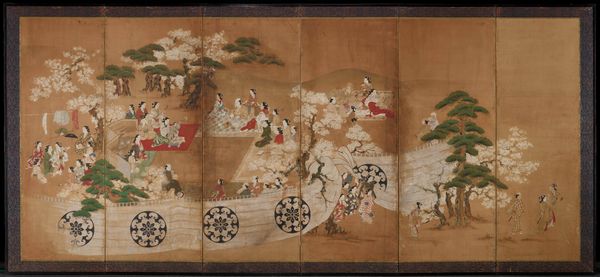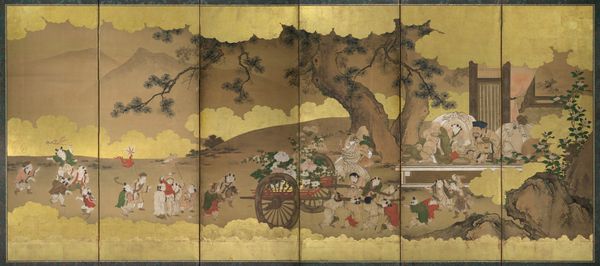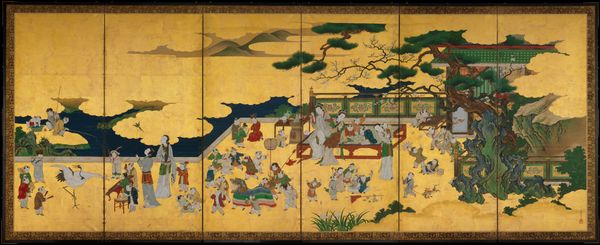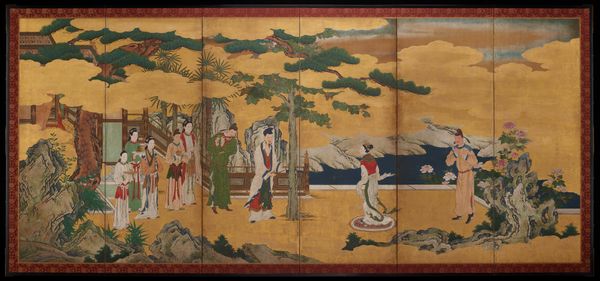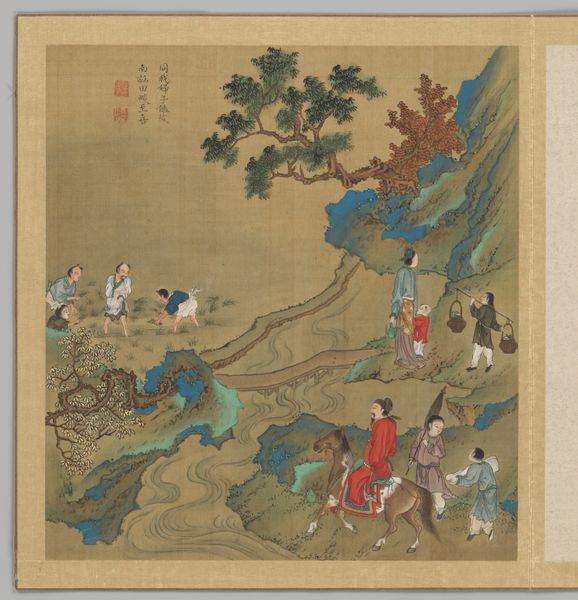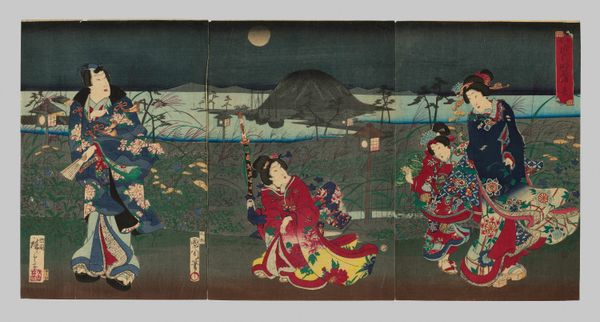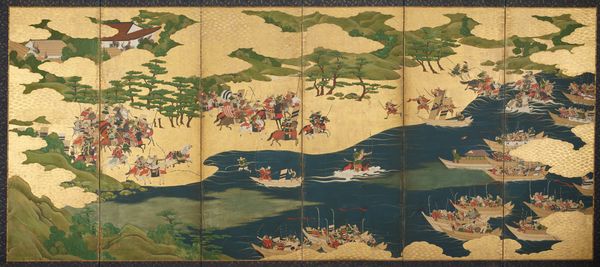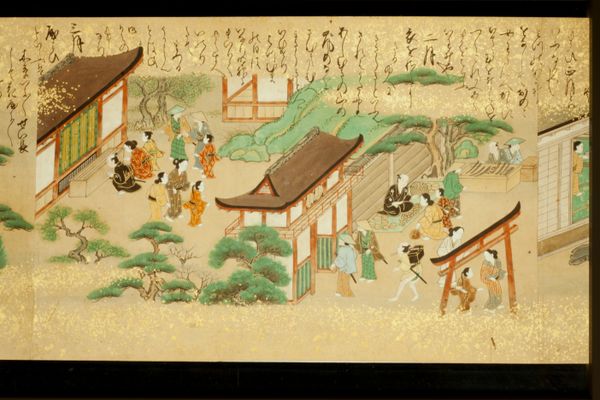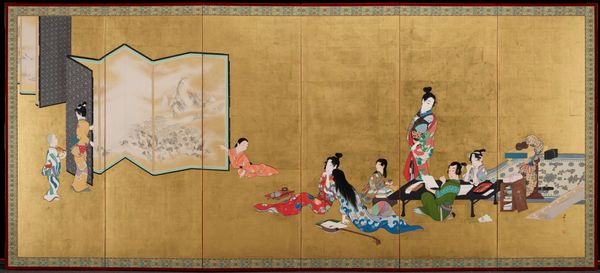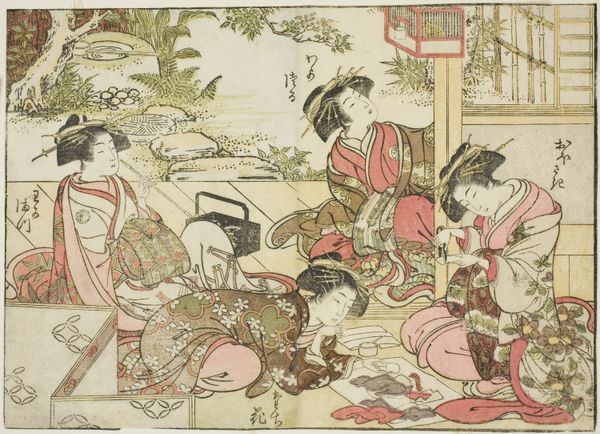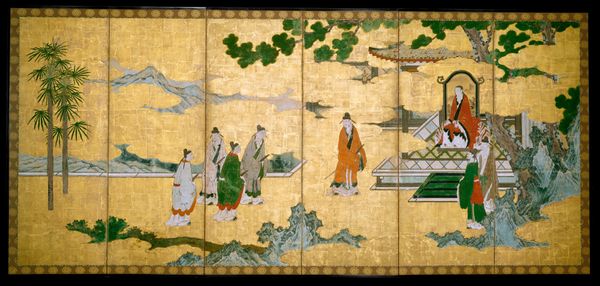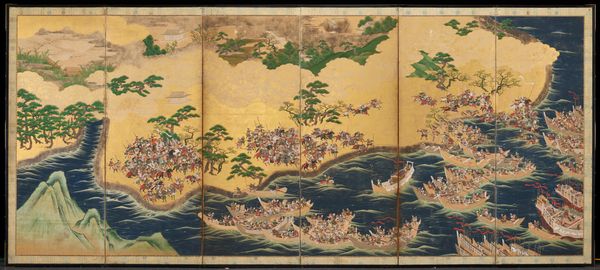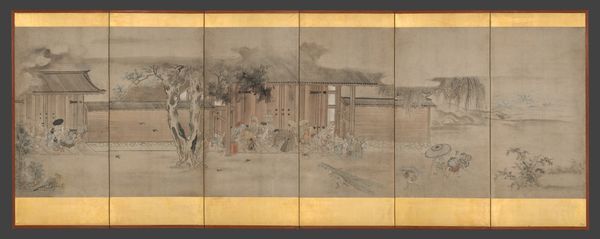
watercolor
#
water colours
#
asian-art
#
landscape
#
ukiyo-e
#
watercolor
#
genre-painting
Dimensions: 43 3/4 x 113 in. (111.13 x 287.02 cm) (image)49 x 118 in. (124.46 x 299.72 cm)
Copyright: Public Domain
Curator: This screen, titled "Maple Viewing Party", was created by Miyagawa Choshun in the 18th century. It is done in watercolor and depicts figures enjoying an outing. Editor: My initial impression is one of orchestrated leisure, a scene deliberately posed and meticulously rendered. There's an air of performance about it. Curator: Precisely. Ukiyo-e paintings like this offer insight into the aesthetic ideals and social practices of the Edo period. Notice the idealized representation of beauty in the figures and their attire, with flowing robes. Maple viewing or *momijigari*, much like cherry blossom viewing, carries profound symbolic significance linked to transience, the beauty of nature, and the poignant recognition of its ephemeral quality. Editor: So, it’s more than just a pretty picture; it’s a snapshot of privilege, class, and the deliberate cultivation of a certain lifestyle, perhaps even an effort to impose order on the natural world, turning seasonal change into a staged event? These women, so elaborately dressed, seem removed from the cycles of life, insulated by wealth and status. How do we interpret this removal from the contemporary world? Curator: Think of this image as a representation of idealized, timeless elegance. Colors resonate with memory and collective experiences and reference a form of cultural continuity through these recurring depictions of natural beauty. The very act of commemorating these views becomes a social ritual reinforcing the continuity of their aesthetic sensibilities. Editor: I can certainly see that—a longing for the simplicity and beauty of nature amid social complexity. However, can we also acknowledge the selective narrative being presented, one that tends to overlook the daily lives of many during this era? The "floating world" of Ukiyo-e often idealizes beauty without reflecting on the hardships that exist in plain sight. Curator: Your perspective reminds us of art's role not only as a mirror but also as a construct shaping perceptions, but art also functions to connect us to something elemental. We continue to be fascinated by natural changes. The symbols carry a psychological depth—perhaps offering a form of aesthetic and mental peace that persists through time. Editor: I appreciate how this pushes me to look beyond the surface of aesthetic charm to question the socio-political undercurrents inherent within idealized landscapes. It is always a matter of 'who' is floating and at whose expense? Curator: An insightful consideration as we explore these pieces. They hold the aesthetic codes to be culturally carried on to new generations and prompt important discussions about representations of women in art. Editor: And challenge our assumptions. Art remains a living document.
Comments
minneapolisinstituteofart almost 2 years ago
⋮
This colorful screen illustrates a favorite Japanese seasonal pastime, viewing crimson maple leaves in autumn. Within a curtained enclosure, two luxuriously clothed women, surrounded by their attendants, are enjoying music and refreshments laid out on elegant black and red lacquer serving dishes. On the far left, a group of women heat rice wine (sake) over a small fire fueled by dried maple leaves. A foot soldier announces the arrival of his superior, shown in a blue patterned kimono and plaid jacket on the far right. An elegant folding screen in the background—much like the one on which this scene is painted—illustrates how these objects were used both indoors and out for privacy and protection against the wind.
Join the conversation
Join millions of artists and users on Artera today and experience the ultimate creative platform.
